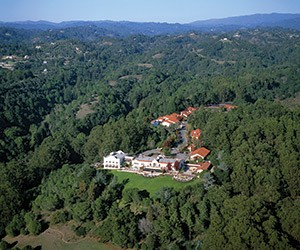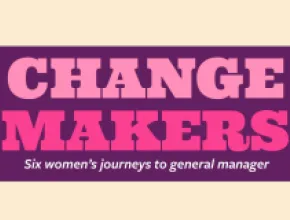A lot is on the line when planning an executive retreat, especially when the attendees are members of the C-Level suite who hold all of the cards when it comes to a meeting planner’s employment.
To provide some crucial tips to holding a successful retreat, Meetings Focus reached out to two top planners in the discipline: LeAnne Grillo, co-founder and partner with Spaces for Change, which specializes in collaborative retreats; and Sharon L. Johnson, a project manager for Kaiser Permanente.
LeAnne Grillo
“One of the things about retreats that’s probably different than other meetings is they really depend on outcomes—that’s going to vary on what your focus is,” Grillo says, adding that one executive workshop she was working on even planned to utilize a tent for some sessions.
According to Grillo, it’s crucial to set and manage expectations far in advance of the meeting, take care of executives’ creature comforts and make sure that a connection to the rest of the world is still there.
“You have to let people know if they are going to leave their devices behind, and that the Internet connection [in guest rooms] is good, so when people go to their room after their meeting they can check their e-mail—they need to know what to expect,” Grillo says. “We always do enrollment calls upfront—talk to each person and get an idea of their goals and objectives for the time away, and make sure they’ll be comfortable, because if they’re comfortable they’ll participate, learn better and be more fully present.
“In many cases it’s less about the cost of the meeting than the cost of the time of the people involved,” she continues.
Grillo specializes in multi-stakeholder events, which bring together diverse groups of people to work on some sort of change, and develop their leadership capacities to address that change or an important project.
Good structure is key to successful retreats such as these.
“Your structure drives behaviors. Your structure drives the outcome, so you need to be conscious of the choices you make,” Grillo stresses. “Get started right after breakfast, and then stay down in that area for lunch—if they walk back and forth they would lose time. At the end of the day leave that space and walk to the lodge for dinner. It sort of changes the feel, which causes a different sort of conversation to happen.”
Having at least a couple nights of duration is also important, she says, so attendees can sleep on things and properly reflect on conversations and progress. It’s also good to mix up the context, she advises, as people are creatures of habit, so you want to shift their behavior patterns.
“In order to change the way we work, we have to change ourselves,” Grillo says. “We all see a situation through our own lens and through our own habits. We need to find ways to see what’s going on through everybody’s lens. You can’t solve the problem with the same type of thinking that created it.”
For Grillo, in the end it’s all about transformation from within, with no need for outside motivational gurus to bring home the message.
“We create our own solutions, and not only can we probably not agree what needs to be done, we probably can’t agree on the problem to begin with,” Grillo quips. “These retreats or workshops help you think in different ways. It changes the level of thinking, the quality of thinking, and that’s really hard to do when you’re going to the same office every day.
“The desk is a dangerous place from which to view the world.”
PageBreakSharon L. Johnson
A planner and project manager for healthcare giant Kaiser Permanente’s Northern California region, Sharon L. Johnson’s retreat meetings all take place in Northern California, and she frequently utilizes properties such as Santa Cruz’s Chaminade Resort & Spa for their serenity. She also has held many meetings at Oakland’s Claremont Resort, due to its proximity to Kaiser’s regional headquarters, and recently conducted a site visit at Carmel’s Carmel Valley Ranch Resort.
“I prefer a quiet environment, preferably away from a lot of congestion and noise, and somewhat remote,” she says. “All of our programs are residential and we don’t want them sneaking home. We want them concentrating on the work.”
Johnson also prefers large spaces so her groups have room for breakouts, and facilities such as a ropes course for teambuilding activities are also a plus. But because she has a relatively diverse set of attendees, her needs may vary.
“Some groups may consist of only physicians and other groups may consist of non-clinicians, so the training for the group may be quite different depending on what the audience is,” she says.
For her residential leadership programs, Johnson dedicates nearly a week, starting on a Sunday and ending on a Friday, and hires outside vendors as well as internal facilitators.
Other programs may only last a weekend or just a day in order to get upper-level executives away from their everyday work environment to focus on an important issue. If there are any other groups in the house—including other Kaiser groups—Johnson says she needs to know.
Johnson typically works with executive administrative assistants to coordinate executives’ schedules, necessitating planning far in advance, sometimes three to six months out for nurses and clinicians. It’s not uncommon, she says, to start planning the basics of the meeting at least a year out.
To make sure the retreat is productive, Johnson makes sure to set a few “ground rules” for attendees.
“I have a slideshow at the very beginning and it’s all about etiquette,” she says. “And we want all cell phones put on vibrate. Of course, a doctor can’t be completely removed, but he or she can have their equipment on vibrate so as not to interrupt the proceedings.”
Johnson also seats people in the back of the room who may need to exit—primarily for patient updates—to create as little disruption as possible.
Two very important considerations, according to Johnson, are to make sure there are reserves available in case the budget is exceeded, and to keep your eye on the ball throughout the planning process.
“Pay very close attention to the details, because the smallest details become very important,” she says. “Check and double-check, and then check again. Have a really tight business plan and timeline and then stick to it.”







